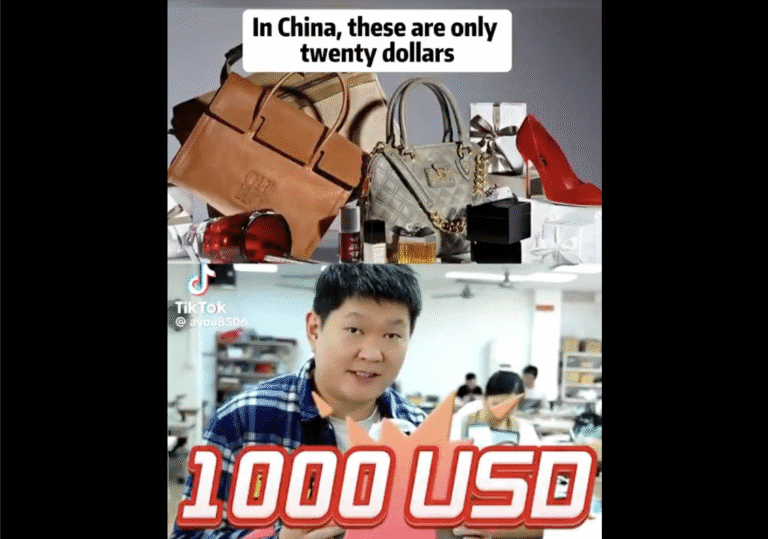The Truth Behind Luxury Brands: Are They Really Made in China?
In recent weeks, the internet has been buzzing with videos suggesting that many luxury items prized by Americans are manufactured in China. As tariffs on Chinese goods rise, these discussions have gained even more traction. Let’s delve into the claims and uncover the truth about the origins of these high-end products.
Are Luxury Brands Actually Made in China?
Viral Claims on Social Media
Videos circulating on platforms like TikTok assert that prestigious brands such as Hermès, Prada, and Chanel, as well as popular fitness apparel companies like Lululemon and Under Armour, are largely produced in Chinese factories. One user provocatively stated, “Your ‘Made in Italy’ Gucci? Eighty percent come from Chinese factories. They just add the logo in Europe to hike the price tenfold.”
Key Highlights from Social Media Claims:
- Manufacturing Costs: A viral TikTok dissected the costs of Hermès’ iconic Birkin bag, estimating that its materials only total around $1,400, but the retail price can soar between $10,000 to $100,000.
- Luxury Brainwashing: Claims assert that the perceived value of luxury items is primarily derived from branding rather than quality.
Luxury Items and Their True Origins
Despite the claims made in viral videos, not all luxury products are manufactured in China. In a fact-check by Newsweek, it was highlighted that:
- Hermès does not produce its bags in China but rather in France, utilizing its own tanneries for rigorous quality control.
- Major luxury brands like Prada and Saint Laurent are also confirmed to be made in Italy, adhering to strict labeling regulations which allow products to be labeled "Made in Italy" as long as the last substantial transformation takes place within the country.
The Economics of Luxury Marketing
A substantial point made by content creators involves the markup attributable to branding. This leads consumers to pay significantly more for luxury brands, which they perceive as exclusive, despite many of their components being manufactured elsewhere.
Bullet Points on Cost Structures:
- Individual components for high-end handbags can cost a fraction of their retail prices.
- The perceived value is often inflated by brand identity rather than inherent quality.
The Fitness Apparel Debate
The conversation has also shifted to athletic brands like Lululemon. Claims have surfaced that specific Chinese factories cater to these brands, suggesting consumers can achieve the same quality at a fraction of the price.
Key Takeaways:
- Lululemon’s Manufacturing: Critics argue that many of Lululemon’s products come from the same two factories that also produce apparel for brands like Fila and Under Armour.
- Pricing Discrepancies: While consumers may pay upwards of $100 for a pair of leggings, similar items can allegedly be purchased in China for as little as $5-$6.
The Impact of Tariffs on Consumer Behavior
Following President Trump’s recent announcement of increased tariffs on goods from China (rising to 145%), the backlash from Chinese state media was swift, featuring humorous and critical content aimed at American consumers.
The Retaliatory Media Response
- Viral content showed AI-generated depictions of distressed American consumers amidst rising costs attributed to tariffs.
- The commentary encapsulated a narrative of lost deals and inflated prices due to trade policies.
Conclusion: Navigating the Luxury Landscape
As consumers grow increasingly aware of where their products come from, the line between luxury and affordability blurs. While many luxury items are marketed as exclusive and high-quality, the revelations about their manufacturing origins invite shoppers to reconsider their purchasing decisions. Understanding the complete picture behind luxury branding can empower consumers to make informed choices about their purchases.
For further details about luxury brands and their manufacturing practices, you can explore Newsweek’s report and other trusted sources like the Wall Street Journal.


